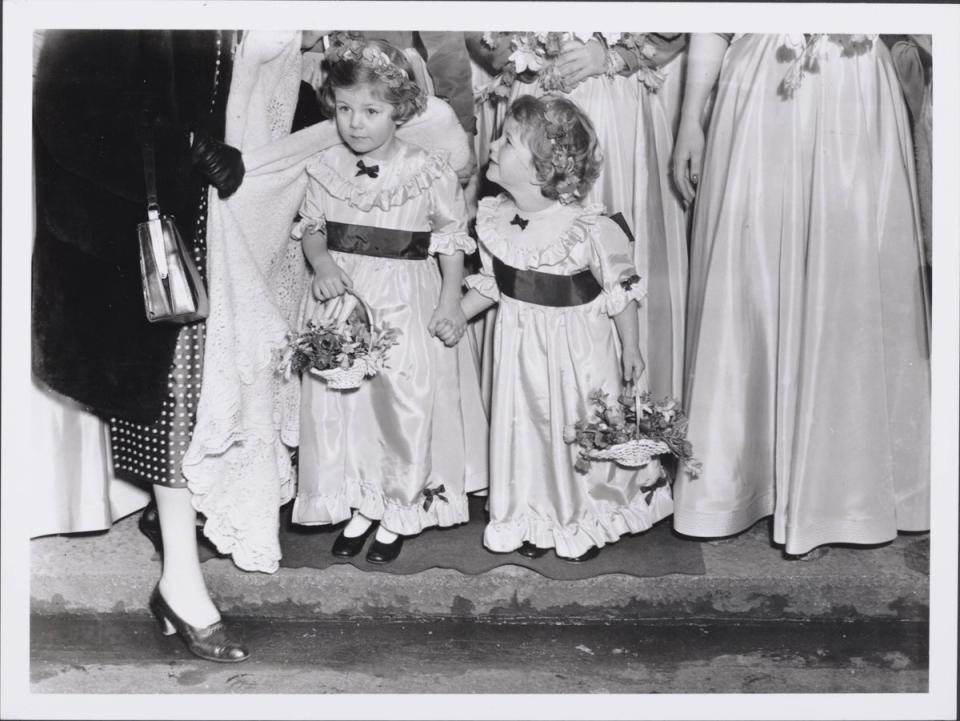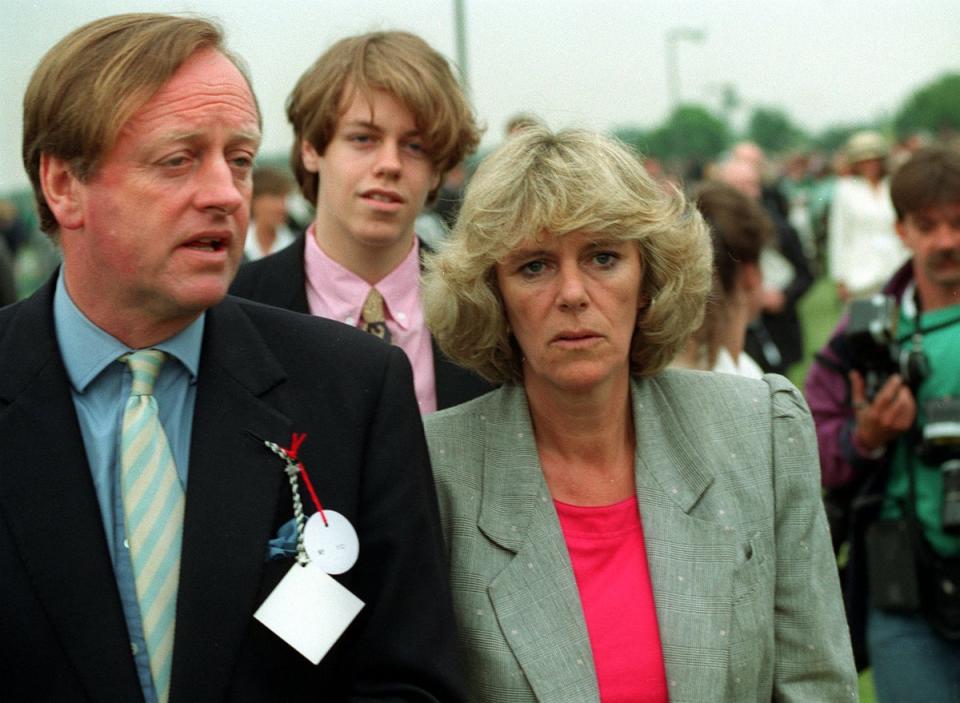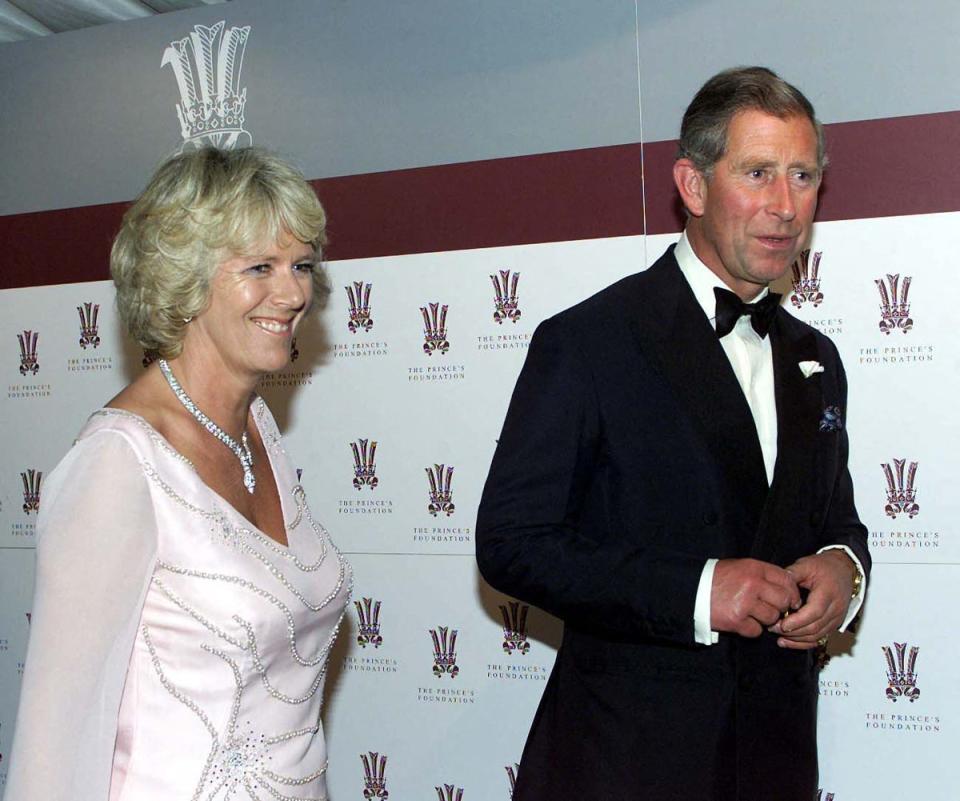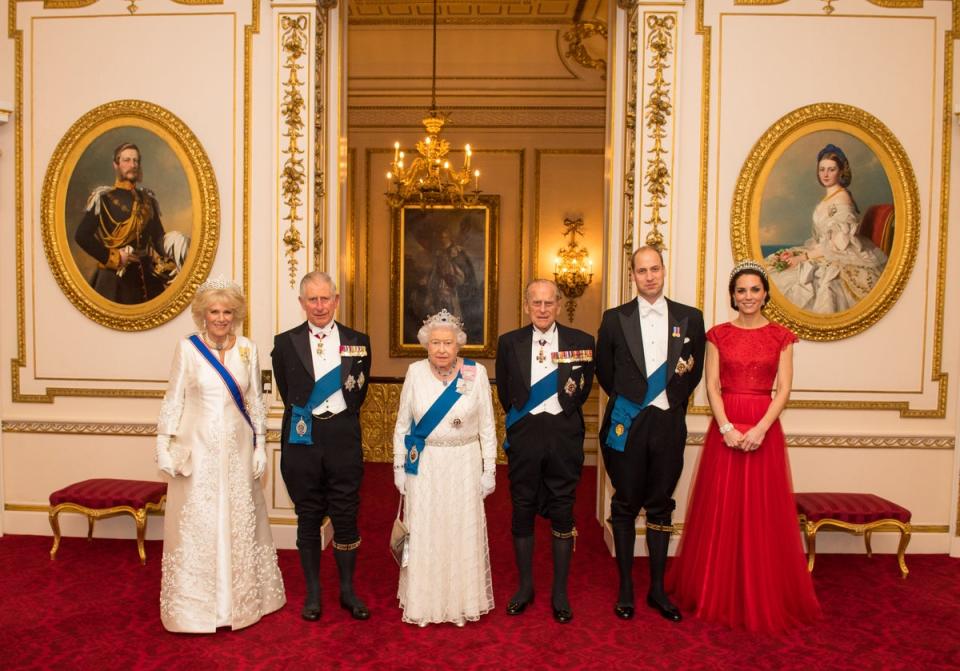Everything you need to know about Queen Consort Camilla
- Oops!Something went wrong.Please try again later.
On Saturday 6 May, Britain will crown a new Queen for the first time in more than 70 years at the coronation of Queen Consort Camilla and King Charles III.
As the country prepares to usher in a new era for the royal family, many might be feeling curious about our head of state and his partner, who will be crowned Queen this weekend.
Camilla Parker-Bowles has been a member of the royal family for many years, but her rise to the very top of the royal family tree was only cemented in 2005, when she married the King (then the Prince of Wales).
Even before their wedding, she and Charles were inseparable. Their relationship has lasted many decades, but it hasn’t always been smooth sailing.
Over the years however, the Queen Consort shed her reputation as “the other woman” to become a firm favourite within the royal family. The late Queen Elizabeth gave her blessing for Camilla to be known as Queen Consort during her platinum jubilee last year, signifying a major shift in her position in the family and in the country’s minds.
Camilla was born Camilla Rosemary Shand at King’s College Hospital on 17 July 1947. Her parents were Major Bruce Shand, a British Army officer who went on to become a businessman, and Rosalind Cubitt, a British aristocrat and daughter of Roland Cubitt, 3rd Baron Ashcombe.
The eldest of three children, she grew up in The Laines, an 18th-century country house in Plumpton, East Sussex. They also had a second home: a three-storey house in south Kensington.
Camilla has described her childhood as “idyllic”. She told Women’s Weekly Australia: “I was one of the very lucky ones. I had an idyllic childhood right in the country, sitting on the South Downs with my brother and my sister and our pets and our ponies. I think it was a simple childhood.”

She recalled riding to school on her pony alongside her siblings, Annabel Elliot and Mark Shand. “We just pottered along this very pretty road with two or three cars going past. Life was very laid-back,” she reminisced. “I suppose I thought life was always going to be like that.”
But life had its own plans for Camilla. At age 16, she attended the Mon Fertile finishing school in Tolochenaz, Switzerland, and later decided to go to France to study French literature at the University of London Institute in Paris for six months.
In 1965, she became one of 311 debutantes in London. Camilla spent the next few years moving around flats in the city with friends and family, working as a secretary for various firms in the West End, and honing her love for horse-riding and equestrian activities.
It was during this period of her life that she met the man who would become her first husband, Andrew Parker-Bowles. Camilla and Andrew met through his younger brother, Simon, and embarked in an on-and-off relationship.

It was during one of their off-periods, in the middle of 1971, that Camilla met Charles, the then-Prince of Wales. Andrew, meanwhile, was dating the Princess Royal. Biographer Gyles Brandreth wrote in his book Charles and Camilla: Portrait of a Love Affair that they were formally introduced by their mutual friend, Lucia Santa Cruz, despite orbiting one another in the same social circles for years.
The future king and Camilla began dating, and it is understood that Charles was serious about Camilla. But when Charles went overseas in 1973 to join the Royal Navy, the relationship was put on hold. Not long after, Camilla and Andrew rekindled their romance and announced their engagement. By July that same year, they were married.
Charles was heartbroken over the breakup, as documented in his letter to his uncle Lord Mountbatten, in which he wrote of his sadness that “such a blissful, peaceful and mutually happy relationship” had come to an abrupt end. However, he and Camilla continued to keep in touch and carried out their affair while she was married to Andrew – who was also unfaithful – and Charles was married to Diana, Princess of Wales.

The tumult in Charles’s marriage to Diana has been well-documented. As for Camilla, her own nuptials came to a definitive end after a 1989 recording of the now-infamous “Tampongate” phone conversation between her and Charles became public. Embarrassed by the intimacy of the call, it was Andrew who asked Camilla for a divorce.
Before their split, Camilla and Andrew had two children together, Tom and Laura Parker-Bowles. She now has five grandchildren: Lola and Freddy, from Tom’s first marriage to Sara Buys, and Eliza, Louis and Gus from Laura and her husband Harry Marcus George Lopes.
During the years of their affair, it was claimed that the late Queen did not approve of Camilla. Royal biographer Katie Nicholl wrote in her 2022 book, The New Royals: “In 1998, when Charles was trying to persuade his mother to be more accommodating of Camilla, the Queen described her as ‘that wicked woman’. Those damning words were reported in distress by Prince Charles himself.” Nicholl also wrote that the Queen “would not have Camilla’s name uttered in her presence”.

But nevertheless, the couple stayed true to one another, and eventually married on 9 April 2005. During the ceremony, they both read the “strongest act of penitence from the 1662 Book of Common Prayer” in order to “acknowledge and bewail our manifold sins and wickedness”.
Clarence House announced at the time that Camilla would use the title “HRH The Princess Consort” when Charles acceded the throne.
Then, last year, the late Elizabeth expressed her “sincere wish” that “when the time comes, Camilla will be known as Queen Consort as she continues her own loyal service”. After Elizabeth died in September 2022, it was widely speculated that this title would be changed to Queen. The title change was confirmed earlier this year.
The public perception of Camilla has also changed over the years. While she was widely vilified for being Charles’s mistress before they made their relationship official, Camilla is now one of Briton’s favourite royals – higher in popularity compared to the Duke and Duchess of Sussex, the Duke of York, and Princesses Beatrice and Eugenie.
Although she is only now preparing for her crowning, which her former butler has said she will be “absolutely terrified” about, Camilla’s place in history was solidified many years ago. All eyes will be on her as she embarks on her future as the Queen.

